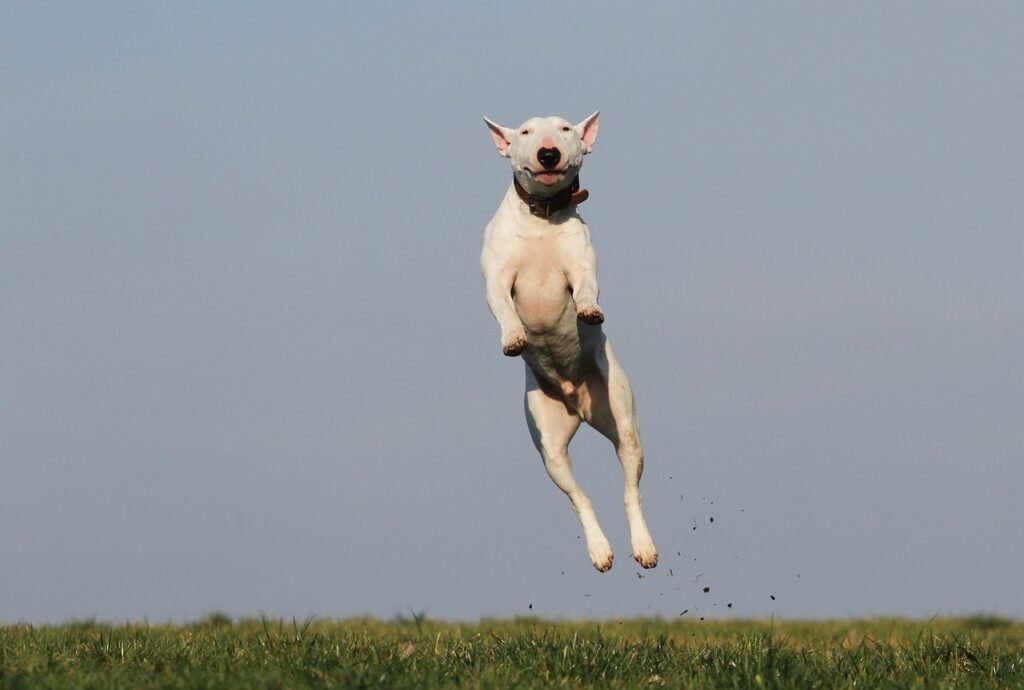
Training is an important aspect of a dog’s life, as it provides numerous benefits for both the dog and the owner. Not only does training improve communication and bonding between the two, but it also provides mental stimulation and enrichment for the dog. Additionally, training promotes good behavior and socialization, making the dog a well-rounded member of society.
Key Takeaways
- Training improves communication and bonding between dogs and their owners.
- Training provides mental stimulation and enrichment for dogs.
- Training promotes good behavior and socialization in dogs.
- Dogs learn and process information through positive reinforcement.
- Consistency and patience are crucial in dog training.
The Benefits of Training for Dogs
Improved Communication and Bonding
Training provides an opportunity for improved communication and bonding between dogs and their owners. Through training, dogs learn to understand and respond to verbal and non-verbal cues from their owners, enhancing their ability to communicate effectively. This increased communication leads to a stronger bond between dogs and their owners, as they develop a shared language and understanding.
Training also allows owners to spend quality time with their dogs, creating a positive and enjoyable experience for both. The time spent together during training sessions strengthens the emotional connection between dogs and their owners, fostering a deeper sense of trust and companionship.
Additionally, training provides an avenue for dogs to receive praise and rewards from their owners, which further reinforces the bond between them. Dogs thrive on positive reinforcement, and the act of training allows owners to consistently reward their dogs for desired behaviors, reinforcing the positive association between obedience and rewards.
In summary, training not only improves communication between dogs and their owners but also strengthens the bond and trust between them. It provides a platform for dogs to receive praise and rewards, further enhancing the positive association with obedience.
Mental Stimulation and Enrichment
Training provides dogs with mental stimulation and enrichment, which is essential for their overall well-being. Mental stimulation helps keep dogs engaged and prevents boredom, which can lead to destructive behaviors. Enrichment activities such as puzzle toys, scent games, and obedience training exercises their cognitive abilities and keeps their minds sharp.
By engaging in training sessions, dogs are challenged to think and problem-solve, which helps to keep their brains active and healthy. This mental exercise can tire them out just as much as physical exercise, making it an important aspect of their daily routine.
In addition to mental stimulation, training also provides dogs with a sense of accomplishment and boosts their confidence. When dogs successfully learn and perform new commands or tricks, they experience a sense of achievement, which contributes to their overall happiness and well-being.
To ensure that training sessions are mentally stimulating and enriching for dogs, it is important to vary the exercises and introduce new challenges gradually. This keeps the training sessions interesting and prevents dogs from getting bored or frustrated.
Tips for providing mental stimulation and enrichment through training:
- Use a variety of training methods and techniques to keep the sessions engaging.
- Incorporate interactive toys and puzzles into training sessions.
- Gradually increase the difficulty level of the exercises to keep challenging the dog.
- Reward and praise the dog for their efforts and achievements.
- Keep training sessions short and frequent to maintain the dog’s focus and attention.
Promotes Good Behavior and Socialization
Training dogs not only promotes good behavior but also helps in their socialization. Socialization is the process of exposing dogs to various people, animals, and environments to help them become comfortable and well-adjusted in different situations. Through training, dogs learn how to interact appropriately with other dogs and humans, which is essential for their overall well-being.
- Training provides dogs with the necessary skills to behave properly in different social settings.
- It teaches them how to greet and interact with other dogs in a friendly and non-threatening manner.
- Training helps dogs understand and respond to human cues and commands, making them more obedient and easier to handle.
Tip: Regular training sessions that include socialization exercises can greatly improve a dog’s behavior and their ability to adapt to new environments.
Understanding Canine Learning and Psychology
How Dogs Learn and Process Information
Dogs have a unique way of learning and processing information. They rely heavily on their senses, particularly their sense of smell, to gather information about their environment. Smell plays a crucial role in a dog’s learning process, as they can detect and differentiate various scents. This ability allows them to associate certain smells with specific actions or behaviors.
In addition to their sense of smell, dogs also learn through observation. They are highly perceptive animals and can pick up on cues and body language from their owners or other dogs. This observational learning helps them understand what is expected of them and how to behave in different situations.
To facilitate the learning process, it is important to use positive reinforcement. Dogs respond well to rewards such as treats, praise, and playtime when they exhibit desired behaviors. This positive reinforcement strengthens the connection between the behavior and the reward, making it more likely for the dog to repeat the behavior in the future.
A key aspect of training is consistency. Dogs thrive on routine and consistency, so it is important to establish clear rules and expectations. Consistency in training methods and cues helps dogs understand what is expected of them and reduces confusion.
Remember, training should be a positive and enjoyable experience for both you and your dog. By understanding how dogs learn and process information, you can create effective training strategies that promote learning and strengthen the bond between you and your furry friend.
The Role of Positive Reinforcement in Training
Positive reinforcement is a key aspect of dog training. By rewarding desired behaviors with treats, praise, or play, you can motivate your dog to repeat those behaviors. Reward-based training helps dogs associate good behavior with positive outcomes, making them more likely to engage in those behaviors in the future.
Using positive reinforcement has several benefits:
- It creates a positive and enjoyable learning experience for your dog.
- It strengthens the bond between you and your dog.
- It encourages your dog to think and problem-solve.
- It reduces the likelihood of fear or anxiety-related behaviors.
Remember to be consistent and patient when using positive reinforcement. Dogs learn at their own pace, so it’s important to give them time to understand and respond to the training. With consistent and positive reinforcement, you can help your dog learn and grow in a supportive and loving environment.
Tip: When using treats as rewards, choose small, bite-sized treats that your dog loves. This will keep them motivated and focused during training sessions.
The Importance of Consistency and Patience
Consistency and patience are key when it comes to training your dog. Dogs learn best when they receive consistent cues and rewards for their behavior. By being consistent in your training methods, you are helping your dog understand what is expected of them and reinforcing the desired behaviors.
Patience is also crucial during the training process. Dogs may not learn a new command or behavior right away, and it can take time for them to fully understand and respond to your cues. It’s important to remain patient and avoid getting frustrated or giving up. Remember that each dog learns at their own pace, and with time and practice, they will eventually grasp the training.
To ensure consistency and patience in your training, here are some tips:
- Use the same verbal cues and hand signals for each command.
- Reward your dog immediately after they perform the desired behavior.
- Practice training sessions regularly, but keep them short and engaging.
- Be patient and avoid punishing or scolding your dog for mistakes.
By following these tips and maintaining consistency and patience, you can effectively train your dog and strengthen your bond with them.
Conclusion
In conclusion, training is not only beneficial for dogs but also enjoyable for them. Through training, dogs can improve their communication and bonding with their owners, experience mental stimulation and enrichment, and develop good behavior and socialization skills. Understanding canine learning and psychology is crucial in providing effective training. By using positive reinforcement, being consistent, and practicing patience, owners can create a positive and enjoyable training experience for their dogs. So, the next time you train your dog, remember that it is not just a task, but an opportunity to strengthen your bond and provide your furry friend with a fulfilling and enriching experience.
Frequently Asked Questions
Are all dogs capable of being trained?
Yes, all dogs have the potential to be trained. However, some breeds may be more responsive to training than others.
At what age should I start training my dog?
It is best to start training your dog at a young age, ideally between 8-16 weeks. However, dogs of any age can still benefit from training.
What training methods are most effective?
Positive reinforcement training methods, which involve rewarding desired behaviors, are generally considered the most effective and humane.
How long does it take to train a dog?
The time it takes to train a dog varies depending on factors such as the dog’s breed, age, and previous training experience. Consistency and patience are key.
Can I train my dog myself or should I hire a professional trainer?
You can train your dog yourself with the right knowledge and guidance. However, hiring a professional trainer can be beneficial, especially for more complex training needs.
What if my dog doesn’t seem to enjoy training?
If your dog doesn’t seem to enjoy training, it could be due to various reasons such as the training methods used or lack of motivation. It’s important to make training sessions fun and rewarding for your dog.




